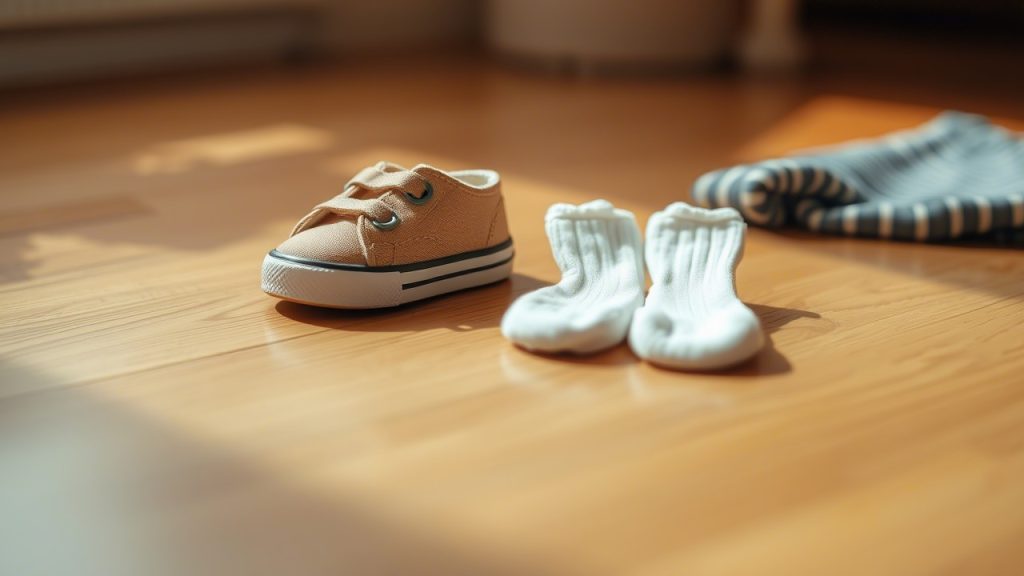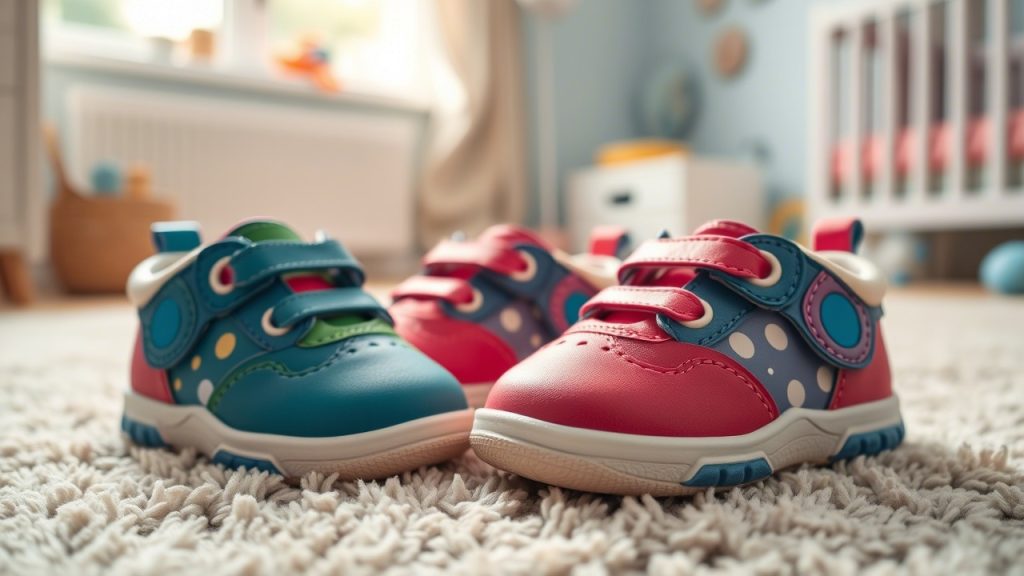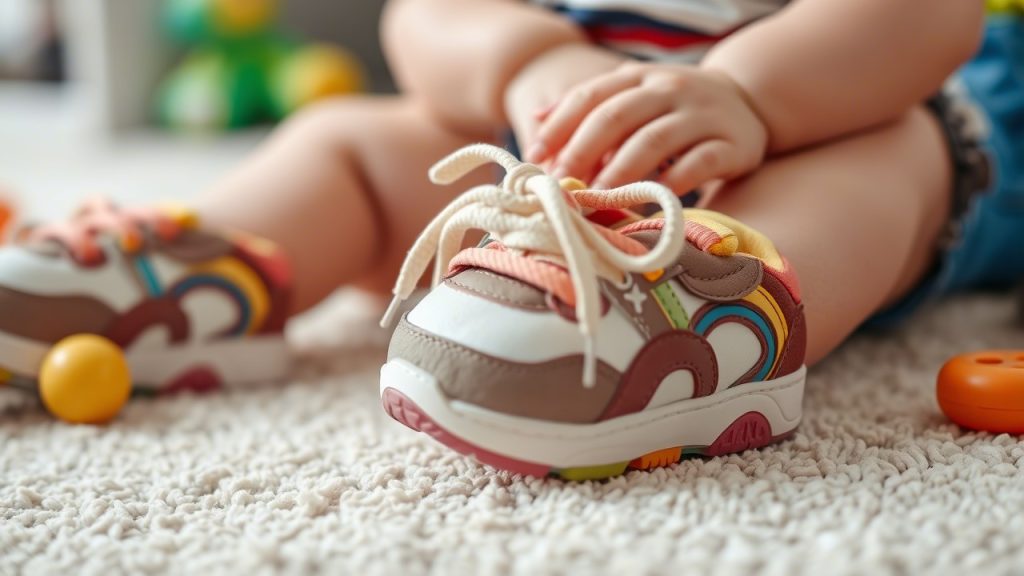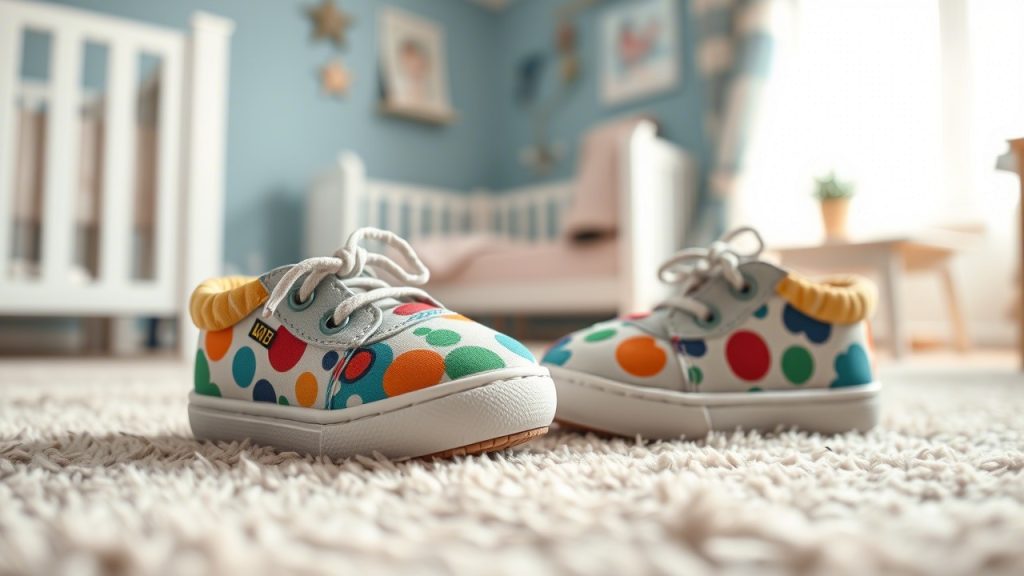Watching your toddler take their first steps is a magical milestone, but it’s also a crucial stage in their physical development. During the walking transition, their little feet are adapting rapidly, strengthening muscles, and learning balance. That’s why choosing the right shoes matters so much.
Toddler shoes shouldn’t just be adorable; they must also support healthy foot growth, allow natural movement, and give confidence during those wobbly first steps. We’ll explore the 15 best toddler shoes to ease the walking transition, ensuring that your little one walks strong and comfortably. Plus, we’ll answer 9 frequently asked questions to help you make an informed decision.
Let’s dive in!
Why the Right Shoes Matter During the Walking Transition
The transition from crawling to walking is a major developmental leap. During this time, your toddler’s foot muscles, tendons, and bones are strengthening. Good walking shoes support this growth by:
- Allowing natural toe splay
- Offering flexibility for proper foot flexion
- Providing lightweight protection
- Ensuring stability without restricting movement
- Offering enough traction to prevent slipping
Shoes that are too stiff, heavy, or tight can slow down your toddler’s natural walking development, possibly causing issues with balance or posture down the line.
Now that we know what’s important, let’s take a look at the top shoe picks!
15 Best Toddler Shoes to Ease the Walking Transition
1. Stride Rite Soft Motion Jazzy Sneaker
Stride Rite’s Soft Motion line is designed specifically for early walkers. The Jazzy sneaker is lightweight, highly flexible, and encourages natural foot movement.
Features:
- Memory foam footbed
- Rounded edges for better balance
- Flexible soles
- Hook-and-loop strap for easy on/off
2. See Kai Run Stevie II First Walker
APMA-approved, these sneakers offer a wide toe box and flexible soles that promote healthy walking patterns.
Features:
- Breathable canvas upper
- Flexible rubber outsole
- Secure fit with adjustable closure
- Stylish and versatile design
3. Robeez First Kicks Soft Soles
Robeez soft soles are perfect for early walkers, mimicking barefoot movement while protecting little feet indoors or on smooth outdoor surfaces.
Features:
- Soft leather construction
- Elasticized ankle for secure fit
- Slip-resistant suede outsole
- Lightweight and breathable
4. Pediped Originals Betty Mary Jane
Pediped’s Originals line is designed to provide a barefoot feel with a bit of protection, ideal for little ones just starting to walk.
Features:
- Flexible leather sole
- Padded heel collar
- Velcro strap for adjustability
- Roomy toe box

5. Livie & Luca Ruche Mary Jane
Stylish yet supportive, the Ruche Mary Jane offers both comfort and cute design for transitioning walkers.
Features:
- Soft leather upper
- Breathable lining
- Flexible rubber outsole
- Adjustable hook-and-loop strap
6. Ten Little Everyday Original
Designed in collaboration with pediatricians, Ten Little shoes are minimalistic and perfectly shaped for a toddler’s developing feet.
Features:
- Wide toe box
- Zero-drop sole for natural walking
- Breathable vegan materials
- Durable, flexible rubber outsole
7. Tsukihoshi Racer
Tsukihoshi shoes are well-loved for their lightweight, flexible designs and roomy fit, making them perfect for toddlers learning to walk.
Features:
- Machine washable
- Ultra-lightweight construction
- Wide opening for easy wear
- Antibacterial insole
8. Native Shoes Jefferson
If you’re looking for something easy to clean and perfect for summer, Native Jeffersons are a fun, breathable option.
Features:
- Lightweight EVA construction
- Slip-on design
- Water-friendly
- Flexible and shock-absorbing
9. Merrell Bare Steps H2O
Merrell’s Bare Steps H2O combines the flexibility of a barefoot shoe with the durability needed for active outdoor play.
Features:
- Extra-wide toe box
- Quick-dry materials
- Flexible soles
- Easy hook-and-loop closure

10. Bobux Xplorer Origin
Bobux specializes in foot-healthy designs, and their Xplorer Origin is crafted for early walking adventures.
Features:
- Super flexible rubber sole
- Soft leather upper
- Lightweight construction
- Elastic ankle for secure fit
11. New Balance 574 Hook and Loop Sneaker
For toddlers who need a bit more stability, the New Balance 574 provides cushioning without sacrificing flexibility.
Features:
- Durable rubber outsole
- Cushioned midsole
- Hook-and-loop strap
- Breathable mesh upper
12. UGG Rennon II Sneaker
For cooler seasons, UGG offers cozy yet flexible sneakers that are perfect for easing the walking transition.
Features:
- Soft suede and leather upper
- Foam insole for comfort
- Flexible sole for movement
- Adjustable straps
13. See Kai Run Gilman Waterproof Boot
For rainy days, See Kai Run’s Gilman boots offer flexibility and comfort without making your toddler’s steps clunky.
Features:
- Waterproof seam-sealed construction
- Flexible rubber outsole
- Wide opening
- Breathable mesh lining
14. Stride Rite Made2Play Phibian Sneaker Sandal
Great for warm weather, this hybrid sandal-sneaker design is flexible, breathable, and easy to clean.
Features:
- Machine washable
- Lightweight EVA construction
- Water-resistant
- Secure closure system
15. Plae Ty Sneaker
Plae shoes are designed with kids’ biomechanics in mind. The Ty sneaker offers customizable fit and natural movement.
Features:
- Flexible rubber outsole
- Eco-friendly materials
- Reinforced toe for durability
- Interchangeable Velcro tabs for a custom fit

What to Look for in Walking Transition Shoes
When buying your toddler’s first walking shoes, here are the key factors to consider:
- Flexibility: Shoes should bend easily with the foot’s movement.
- Lightweight: Heavy shoes can cause your toddler to trip or tire quickly.
- Support without stiffness: A little ankle and arch support are okay, but avoid rigid soles.
- Wide toe box: Allows toes to splay naturally for better balance.
- Breathable materials: Keeps little feet cool and dry.
Always measure your toddler’s feet every few months — their size changes fast!
9 Frequently Asked Questions
1. When should my toddler start wearing walking shoes?
Once your toddler starts taking steps outdoors or on rough surfaces, it’s time to invest in proper walking shoes. Indoors, barefoot is still best.
2. How do I know if a shoe fits correctly?
There should be about a thumb’s width of space between your child’s longest toe and the end of the shoe. The shoe should be snug but not tight around the heel and sides.
3. Should toddlers wear high-top shoes for ankle support?
High-tops aren’t necessary unless prescribed by a doctor. Most toddlers benefit more from shoes that allow free ankle movement.
4. Are barefoot or minimalist shoes better for toddlers?
Yes. Minimalist shoes mimic natural barefoot walking, which strengthens foot muscles and improves balance.
5. How often should I replace toddler shoes?
Typically, every 2–3 months, or when the shoe becomes too tight, shows wear, or no longer fits properly.
6. What materials are best for toddler shoes?
Breathable materials like soft leather, canvas, and lightweight mesh are best. Avoid stiff plastics and heavy rubber.
7. Are machine washable toddler shoes a good idea?
Absolutely! Kids’ shoes get dirty fast. Machine washable shoes make life much easier for parents.
8. What if my toddler refuses to wear shoes?
Some resistance is normal. Choose flexible, lightweight shoes that feel natural. Letting toddlers practice indoors with new shoes can also help.
9. Should toddlers wear socks with their walking shoes?
Yes, socks help prevent blisters and keep feet comfortable. Choose breathable, seamless socks that don’t bunch up.
Final Thoughts – Helping Your Toddler Walk with Confidence
Choosing the best toddler shoes to ease the walking transition isn’t just about cuteness — it’s about setting up your child for a lifetime of healthy movement. Shoes that promote natural foot development, flexibility, and comfort will help your toddler build strong muscles, proper balance, and walking confidence.
Each shoe listed here has been selected because it offers the perfect combination of protection, flexibility, and support. Whether your little one is taking tentative first steps or running circles around you, the right shoes can make all the difference.
Measure their feet regularly, pay attention to their walking patterns, and always prioritize fit and function over fashion alone.
With the right support — and the right shoes — your toddler’s walking journey will be off to a fantastic start!





